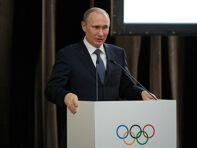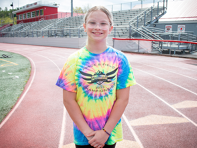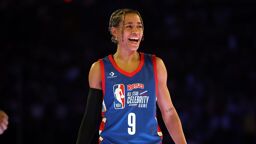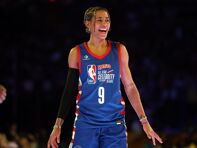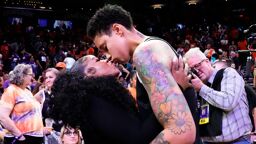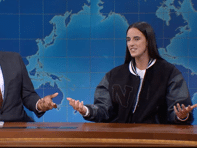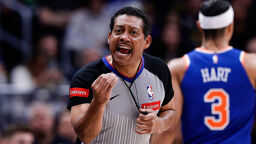Contrary to the belief of certain detractors, transgender people competing in sports isn’t a new phenomenon.
But the concept of transgender people competing while regulations are put in place is more recent. Each time a trans athlete steps onto the field or court, more of this story is written.
Some of the most important hands on that pen, especially in the last decade, have been Black.

The first out trans student-athlete to compete in the NCAA was George Washington University guard Kyle Allums, who came out as a transgender man prior to the 2010 season.
“I want people, not just athletes, to be comfortable with who they are and not feel like they have to hide who they are,” he said prior to GW’s opening game.
Though Allums was in a reserve role, his experiences and story played a crucial part in the NCAA building a comprehensive policy for transgender inclusion. That policy opened the door for a number of transgender student-athletes, including the first trans All-Americans and national champions.
As Allums was working through his college career, an MMA fighter far away was just happy to work, fight and not rehash any of her past. Her transition occurred years prior.
“For years I’ve known at some point it’s very likely the shoe would drop,” the fighter told Outsports in 2013. “Maybe someone would guess that I’m trans. Maybe they would know me from my life before I transitioned. I’ve been waiting for that phone call to happen.”

The shoe dropped for Fallon Fox that year when she publicly came out after her second professional bout, a knockout win over Erica Newsome. Fox fought in six pro MMA bouts, and ended up with a record of 5-1. Her impact in and out her sport goes far beyond the cage.
“I consider myself a woman,” she said. “I happen to fall into the transgender category, but I describe myself as a woman first, transgender woman second.”
To transgender people, even those who are turned off by sports, Fox is still a touchstone for trans pride and resistance. When Alana McLaughlin made her MMA debut in 2021, she cited Fox as a valued mentor.
“I could not have done what I did without Fallon leading the way,” McLaughlin said to Outsports in 2021. “It was harder when she did it. Race played a factor in how she was treated. Fallon was the first. Once again, a Black woman leading the way.”

Fox’s journey also helped a Black trans man in boxing find his place. Patricio Manuel’s return to the ring was inspired in part by seeing Fox competing. He even made a video supporting her.
“It is hard to stand out and be yourself in this world,” Manuel said in an interview with the Trans Sporter Room podcast last November. “Anyone who will risk it all to do what they want, how can you not support it?”
Manuel was a women’s amateur champion and Olympic hopeful prior to his transition in 2013. In late 2018, Manuel became the first transgender man to step into the professional boxing ring, and win.

When Manuel was preparing to make his mark, two high school students in Connecticut, Terry Miller and Andraya Yearwood, were shining on the track. As a high school freshman, Yearwood won the state championship in her school classification at 100 meters and 200 meters in 2017.
In 2018, Miller swept both sprints at the class state meet and also at the all-class Connecticut Open championship.
Though Miller’s and Yearwood’s success invited lawsuits from the Alliance Defending Freedom, they are Connecticut’s, and perhaps the country’s, first out transgender state high school athletics champions.
As Miller and Yearwood returned to the track in 2019, a trans woman to the north of them was making her name known at the collegiate level. CeCé Telfer, then a senior at NCAA Division II Franklin Pierce University in New Hampshire. qualified for the NCAA indoor championships in the 60-meter hurdles.
She fought back from a poor start to win sixth place and became the first out trans student-athlete in NCAA to achieve All-American honors.
In the 2019 outdoor season, Telfer switched to the demanding 400-meter hurdles, and ended up breaking an even larger barrier. She qualified for nationals, where she put together a wire-to-wire victory, becoming the NCAA’s first out trans student-athlete to earn an individual national championship at any level while competing as the gender with which they identify.
Telfer was named Outsports Female Athlete of the Year in 2019. In an interview about the honor, she said her senior season was about sending a message for the entire community.
“I try to lead by example,” she said. “The one quote that has been with me my whole life is; ‘Be the change you want to see in the world.’ I want to be that change, a step forward in making the world a more inclusive and safe place. It’s all starts with me.”
Each of these athletes, some young, and some not-so-young, were the change they wanted to see. Each of them also boosted someone who came after, and those who will come in the future.














